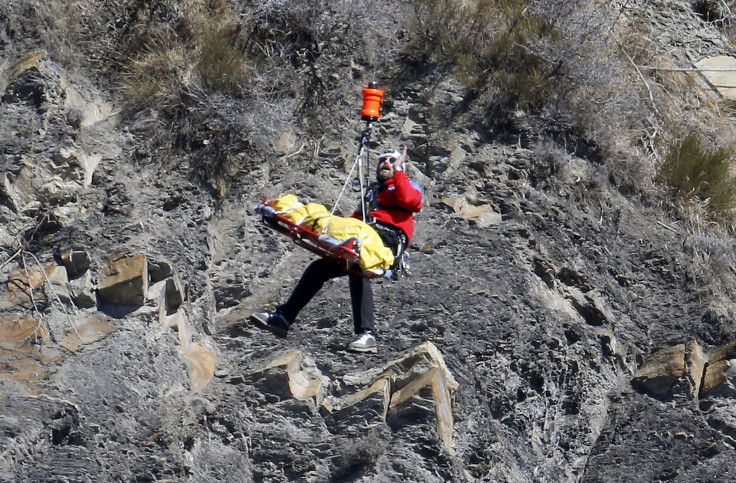Germanwings Alps disaster: Rescue workers guard crash site from looters and wolves

French rescue teams are guarding the area of the Germanwings crash to keep thieves from stealing passengers' possessions.
The 1,000 strong team is facing a race against time to move the victims' remains into body bags to be winched down to a helicopter drop zone and taken to a Marseille laboratory for DNA analysis. They will then be taken to a makeshift morgue in Seyne-Les-Alpes.
Forensic teams have sectioned off the 400sq yd area into sections which are then thoroughly searched for human remains and possessions.
The work is hazardous as the site is on an almost vertical gradient on the side of a ravine, forcing the teams to abseil to inaccessible areas.
"It is extremely hard," a victim identification team spokesman said in a Mirror report. "However, we have to ensure looters do not try to get to the debris in search of valuables.
"We are also ensuring animals such as wolves do not get into the zone we have secured."
A police spokesman added: "We have to stop pillagers getting to the debris in the search for valuable objects and stop animals from slipping into the zone."
Jean-Sebastian Beaud from the High Mountain Police in the French Alps said: "As a rescuer you do see a lot of things that are not pretty, but never anything on this scale."
Rescuers have so far discovered 400 to 600 fragments of human remains.
Gendarmerie colonel Patrick Touron said: "We haven't found a single body intact."
He added that DNA was the only way to identify the 150 who died, according to a Sun report. "DNA samples have been taken from objects provided by the victims' families and friends – such as toothbrushes.
"These are being used to help identify the dead."
There are fears that the body parts will begin to decompose with rising Spring temperatures.
The rescue team includes two anthropologists who usually work on human remains found at archaeological digs.
It is expected to take at least three weeks before all the body parts are recovered, and many will be only identified by dental records.
© Copyright IBTimes 2025. All rights reserved.






















